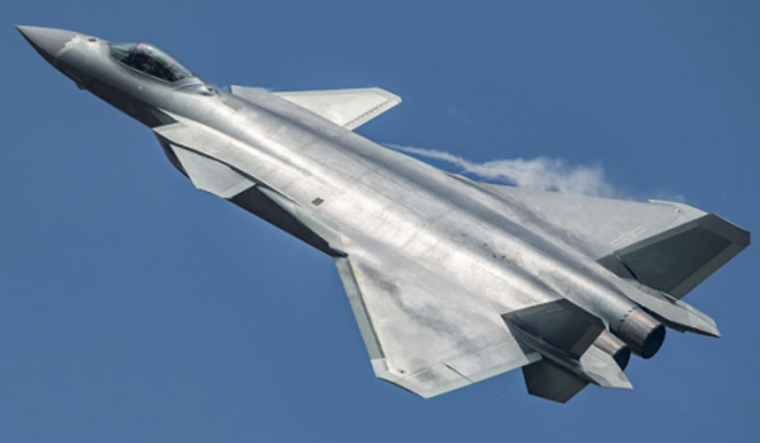Even as the Indian Air Force on Wednesday reiterated the necessity of the controversial Rafale fighter deal, a Hong Kong-based daily reported that China has achieved a breakthrough in its J-20 stealth fighter programme by ironing out flaws in its indigenous engine. The daily noted that the development could help fulfil China's plan to put the J-20 into mass production by the end of the year.
While China has built a range of indigenous fighters over the past five decades, the country has struggled to master the development of reliable engines that match the durability of comparable Western and Russian systems. This has been attributed to the country's inability to master the high-precision metallurgy to fabricate engine components that can operate at extreme temperatures for long periods.
Chinese-developed engines in the past were reputed to have operating cycles lasting only hundreds of hours before requiring complete overhaul compared with Western systems that could operate for thousands of hours.
As a result, a number of existing Chinese aircraft use engines directly imported from Russia or developed with Moscow's help. These include the JF-17 fighter, which uses the RD-33 engine used on Russia's MiG-29, and the J-10, which uses variants of the Russian AL-31 family. Interestingly, both the RD-33 and AL-31 engines are well-known to the Indian military: the former is used by the MiG-29s in service with the Indian Air Force and Navy, while the AL-31 powers the SU-30MKI fighter.
On Wednesday, the South China Morning Post quoted Chinese military sources as saying developers had rectified overheating problems with the fan blades of the WS-15 engine powering the J-20. The WS-15 is speculated to be capable of producing up to 133 kilonewtons of thrust. The WS-15 is considered vital to enhancing the J-20's capabilities as Russia has been reluctant to part with its latest technology given China's alleged history of espionage and reverse-engineering.
The WS-15 uses single-crystal turbine blades for its engine fan. These blades are able to operate at extreme temperatures for prolonged periods. The high-temperature capability is crucial for the WS-15 to provide 'supercruise' performance for the J-20. Supercruise is the ability of an aircraft to attain supersonic speed without the use of its afterburner and gives it an advantage in combat scenarios, in addition to reducing its fuel consumption.
The J-20 is considered as being vital to China's plans to project power against potential rivals in the Asia-Pacific and India as the US F-35 stealth fighter enters services with the US military, Japan, South Korea and Australia over the next few years.
China currently has around 20 J-20 aircraft, but is reportedly eyeing over a hundred of the aircraft. In addition to its use as a fighter to shoot down enemy aircraft, experts claim the J-20's large size makes it suitable for long-range strike missions.



